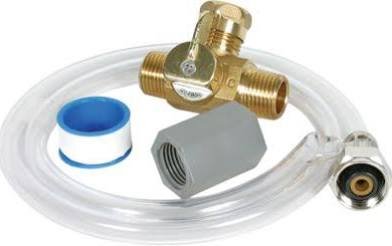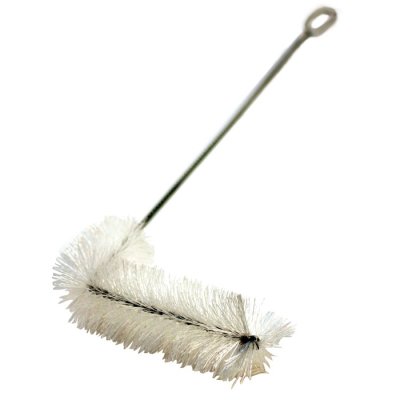Having moved my boat up to Connecticut this summer where we plan to leave it on the hard this winter, I just finished thoroughly winterizing the boat in prep for haul out. We have a normal trawler with all of the systems: engine, raw water anchor flush, generator, waste system, bilges, fresh water system and air conditioner. All of these need to be winterized as well as the DC system. So here is what I did:
The engine and generator were the easiest. I just closed the seacock, used a bilge pump to empty the strainer of water (to limit the amount of antifreeze I had to add) filled it with antifreeze, started the engine and poured antifreeze into the strainer while the engine idled and sucked it up. I used a half gallon for the single cylinder NextGen generator and three gallons for the 6 cyl Yanmar.
The air conditioner and the raw water wash down system both use the same thru hull and strainer. I winterized the wash down by using the same procedure as the engine: filled the strainer, flipped the switch on the raw water pump and ran a half gallon through it.
The air conditioning system was a bit more trouble because that pump isn't self priming like the others. So I removed the suction supply hose, elevated it a foot or so and with a funnel poured antifreeze in while the compressor and raw water pump were running. It took 30 seconds to suck down a half gallon of antifreeze.
The fresh water system was the most difficult. First I pumped the tank dry and disconnected the supply and return to the hot water heater and cross connected them with a short piece of tubing. I also opened the drain valve to the hot water heater. Then I pulled off the suction hose to the fresh water pump and temporarily connected a 3/4" piece of tubing to the suction fitting on the pump. I put the other end in a gallon jug of antifreeze, started the pump and one by one opened the fresh and hot water taps on the sink, bath lavatory and shower until I got a good stream of pink stuff out.
I also dumped a pint of antifreeze into the drain trap on the sink and lavatory and dumped a half gallon into the shower drain until I heard the shower sump pump go on and off.
The toilet is a raw water electric flush system. So I shut the thru hull supply and ran the flush pump to dump the bowl as dry as possible. Then I put a half gallon in the bowl and flushed it through. The holding tank was previously dumped and although a half gallon of antifreeze probably won't keep the couple of gallons that are probably left from freezing, it won't harm the tank if it does.
The last thing to do was the bilges. The boat has a forward bilge and pump which is always dry. But there is a bilge underneath the engine that overflows into an aft bilge with a pump. So I pumped the engine bilge over to the aft bilge with a hand pump. Any water left won't hurt anything if it freezes and there can't be more than a couple of quarts anyway. Then I dumped a gallon of antifreeze in the aft bilge to protect its pump.
The final thing to be concerned about in our climate where the overnight temps can get down to -10 F is the batteries. If they are discharged they will freeze and ruin them. Some remove the batteries and put them in the garage on a trickle charger. I have a 100 watt solar panel that has worked fine to keep them charged while on a mooring all summer so I am going to rely on that to keep them topped off for the winter. Every boat yard I know of will not allow you to permanently plug in an electric cord, even for battery charging only. I wouldn't rely on it to keep my boat or batteries from freezing in any case- too easy to get disconnected.
This whole process was somewhat tedious. It took about 3-4 hours and 8 gallons of antifreeze or about $30-40 worth. But the marina where I moor charges a flat rate of $750 to do all of this stuff and I know that they will not bypass the water heater which is a pain to flush out in the spring if it is filled with antifreeze. So the time was well spent to do the job right.
David
The engine and generator were the easiest. I just closed the seacock, used a bilge pump to empty the strainer of water (to limit the amount of antifreeze I had to add) filled it with antifreeze, started the engine and poured antifreeze into the strainer while the engine idled and sucked it up. I used a half gallon for the single cylinder NextGen generator and three gallons for the 6 cyl Yanmar.
The air conditioner and the raw water wash down system both use the same thru hull and strainer. I winterized the wash down by using the same procedure as the engine: filled the strainer, flipped the switch on the raw water pump and ran a half gallon through it.
The air conditioning system was a bit more trouble because that pump isn't self priming like the others. So I removed the suction supply hose, elevated it a foot or so and with a funnel poured antifreeze in while the compressor and raw water pump were running. It took 30 seconds to suck down a half gallon of antifreeze.
The fresh water system was the most difficult. First I pumped the tank dry and disconnected the supply and return to the hot water heater and cross connected them with a short piece of tubing. I also opened the drain valve to the hot water heater. Then I pulled off the suction hose to the fresh water pump and temporarily connected a 3/4" piece of tubing to the suction fitting on the pump. I put the other end in a gallon jug of antifreeze, started the pump and one by one opened the fresh and hot water taps on the sink, bath lavatory and shower until I got a good stream of pink stuff out.
I also dumped a pint of antifreeze into the drain trap on the sink and lavatory and dumped a half gallon into the shower drain until I heard the shower sump pump go on and off.
The toilet is a raw water electric flush system. So I shut the thru hull supply and ran the flush pump to dump the bowl as dry as possible. Then I put a half gallon in the bowl and flushed it through. The holding tank was previously dumped and although a half gallon of antifreeze probably won't keep the couple of gallons that are probably left from freezing, it won't harm the tank if it does.
The last thing to do was the bilges. The boat has a forward bilge and pump which is always dry. But there is a bilge underneath the engine that overflows into an aft bilge with a pump. So I pumped the engine bilge over to the aft bilge with a hand pump. Any water left won't hurt anything if it freezes and there can't be more than a couple of quarts anyway. Then I dumped a gallon of antifreeze in the aft bilge to protect its pump.
The final thing to be concerned about in our climate where the overnight temps can get down to -10 F is the batteries. If they are discharged they will freeze and ruin them. Some remove the batteries and put them in the garage on a trickle charger. I have a 100 watt solar panel that has worked fine to keep them charged while on a mooring all summer so I am going to rely on that to keep them topped off for the winter. Every boat yard I know of will not allow you to permanently plug in an electric cord, even for battery charging only. I wouldn't rely on it to keep my boat or batteries from freezing in any case- too easy to get disconnected.
This whole process was somewhat tedious. It took about 3-4 hours and 8 gallons of antifreeze or about $30-40 worth. But the marina where I moor charges a flat rate of $750 to do all of this stuff and I know that they will not bypass the water heater which is a pain to flush out in the spring if it is filled with antifreeze. So the time was well spent to do the job right.
David




